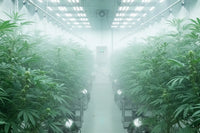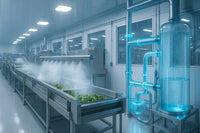Perhaps you or your family love making jams and jellies and storing them for later use? Or, maybe you run a business that deals in processed meats or pickled fruits and vegetables? Either way, you’ll likely pour or place your creations into canning jars for storage and later use. If you plan on doing it right, then it’s important for you to know how to disinfect canning jars and bottles. In this article, we’ll talk about why disinfecting your storage containers and jars is important, and we’ll also tell you how to do it right so you and your family (and your customers) can enjoy your meats, pickles, jams and jellies for a long time after you can them.
Importance of Disinfecting the Jars
If you perform food preservation incorrectly, it may result in food loss. One crucial aspect of this process is disinfecting and sterilizing the canning jars. Sterilizing is an essential step in the preservation process. Disinfecting helps remove bacteria, yeast, and fungus from the canning jars. It also increases the storage time of the canned food.
Ways to Disinfect your Canning Jars
Boiling Canner
Fitted, removable lids and perforated, or curved wire racks are features of boiling water canners. In a boiling-water canner, the jars are arranged on the rack with the right side up. First, add hot (but not boiling) water to the canner and the jars one inch above the jar tops. Then boil for 10 minutes.
Addressing the challenge of how to disinfect canning jars correctly, when using this method, also requires some geographical or topographical considerations. Experts tell us that you must consider the elevation, of the location where the canning takes place, when determining the length of the sterilization process. For altitudes lower than 1,000 ft., a minimum boiling time of 10-minutes is suggested. Add one minute to your boiling time for each additional thousand feet of elevation.
Sterilization in the Oven
Set the oven to 275 degrees F. Wash the canning jars and their lids in hot, soapy water. Next, rinse each can and lid without drying them. Then, place the jars on a baking sheet and heat them in the oven for 10 minutes.
Vinegar Sterilization Method
Add distilled white vinegar to the glass jar, until it is one-third full; fill the remainder with hot water. Let the jar stand for ten minutes. After emptying the jar, thoroughly rinse with hot water 2-3 times to get rid of the vinegar smell.
Microwave Sterilization Method
Instead of utilizing the traditional oven method, sterilizing glass jars in the microwave is quick and straightforward. Before sterilization, properly wash and clean the jars. The glass jars should be wet before being microwaved on high for 60 seconds. Dry the jars with a fresh towel. You can sterilize metal lids by boiling them for 10 minutes and then letting them dry.
Dishwasher Sterilization Method
Use the sanitize cycle on the dishwasher. Please be aware that the sanitizing cycle may last longer than regular wash cycles. Keep your jars in the steaming dishwasher until it’s time to fill them.
Electrolytically generated hypochlorous acid
This method has been proven to be effective for sterilizing canning jars. Hypochlorous acid (HOCI) is produced by applying electricity to a mixture of table salt and water. It is a mild acid that is good at eliminating bacteria and fungi from any surface, even canning jars. This acid is created using a kit that is easily accessible. The mild acid is used to wipe the canning jar lids and jars before food items are stored. It is 100% safe, and eliminates bacteria and fungi within or around the jars’ sealing lid.
What types of items can be stored in a Canning Jar?
For storing dry items like wheat, white rice, rolled oats, sugar, salt, and corn in your long-term food storage, glass jars are surprisingly effective. Glass has the enormous benefit of forming a real barrier to air and moisture. It also prevents poison from leaking into the meal. Canning jars are also great for storing fruits and vegetables such as;
- Grapes
- Blueberries.
- Blackberries.
- Strawberries
- Raspberries.
- Pineapple.
- Watermelon.
- Bell peppers.
What is the shelf life of food in a canning jar?
According to the National Center for Home Food Preservation, canned food will stay in good condition, in a Mason jar, for 12 to 18 months if it is properly sealed and stored in a cool, dark location. It is critical to remember that the foods’ quality will deteriorate with time.
What types of jars work best for canning?
Tempered glass should be used for canning jars. These jars are made using a tempering procedure to prevent breakage from the heat or pressure of the canning process. To ensure the glass is sturdy enough to endure processing, it should also be thicker than ordinary jars. Make sure the jar you use is of the Mason variety, as Mason Jars are more durable than conventional canning jars. According to the National Center for Home Food Preservation, a Mason-type jar is an ideal choice because it is made expressly for home canning. Commercial mayonnaise jars, particularly those placed in pressure canners, may not seal and may even burst.
Why is hypochlorous acid best for disinfecting your Canning Jar?
Hypochlorous acid is entirely non-irritating and harmless. It doesn’t burn even if it spills on your skin or into your eyes. In addition, you won’t experience any adverse effects from accidentally consuming hypochlorous acid. Studies show that food produce, including fruits, vegetables, poultry, etc., can be safely disinfected with hypochlorous acid. You can, therefore, use it on your canning jars without any cause for concern. Despite being risk-free, it is more potent than harmful disinfectants and more effective at eliminating microorganisms.
How to make hypochlorous acid?
Hypochlorous acid (HOCL) is created through a process called electrolysis, by combining table salt and water and running electricity through it. Home electrolysis devices can create stable hypochlorous acid from table salt and water. Due to its low pH levels, and acetic acid content, distilled vinegar is occasionally added to reduce the pH and create a more effective hypochlorous acid solution. When choosing a home system, the quality of the electrolysis cells is an important consideration.
If you are wondering how to disinfect canning jars at home, typically, these home systems come with kits containing everything needed to produce HOCL. All that’s needed is for you to purchase non-iodized, food-grade salt (available from any supermarket) – and you can begin the process of disinfecting and sterilizing your canning jars. “Home electrolysis kit” is another name for these packages. You can purchase hypochlorous acid kits here.
***Note to the person Editing/approving this article: “ (If you live under 1,000 feet, boil for an extra minute for every extra 1,000 feet.) – this really makes no sense. *** It does make sense because the experts say it does! (…) (…) Scientific reason: Increased altitude = decreased atmospheric pressure = decreased boiling point of water. Therefore = boiling time must be increased!***
Other Uses of Hypochlorous Acid
We said earlier that hypochlorous acid is a general disinfectant. These are the other things that hypochlorous acid can be used to disinfect:
- Food Produce
- Meat
- Furniture
- Surgical/Medical Equipment
- Livestock
- Water
- Seafood
- Poultry
- Household furniture and fittings
- Toilets and bathrooms, among others.





